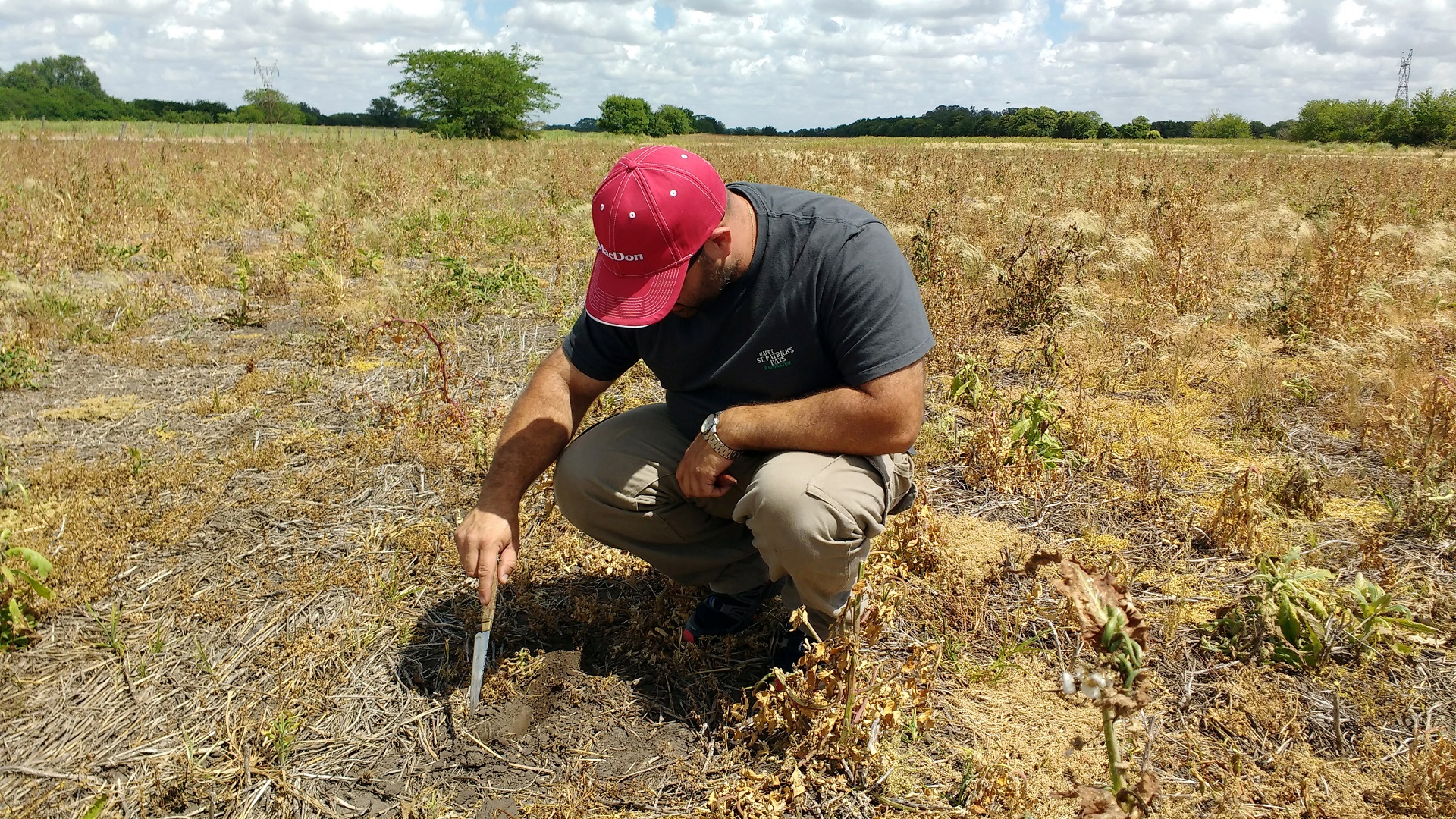Image: Juan Graneros scratches the ground with a knife at his farm near Chivilcoy, Argentina December 5, 2017. Picture taken December 5, 2017. REUTERS/Maximilian Heath
By Maximilian Heath
CHIVILCOY, Argentina (Reuters) – Juan Graneros does not remember the last time he saw rain fall on the soy and corn fields he leases in Argentina’s bread-basket province of Buenos Aires, and he and fellow farmers are starting to doubt they can recover investments made in this year’s crops.
A drought that set in around the start of the Southern Hemisphere springtime on Sept. 21 in parts of the central farm belt threatens late-season soy and corn planting and the development of already sown crops.
Each new day without rain on one of his leased fields in Chivilcoy, 160 kilometers from Argentina’s capital city, brings more worries to Graneros about his finances.
“Everything I had planned to sow late in the season is not planted due to lack of moisture in the ground. The only thing I cannot control is the rain,” he said, looking out over weed-ridden scrubland that is usually prime growing area.
“I already paid the lease and the inputs. I have to plant no matter what, and try to lose as little as possible,” he added.
Argentina is one of the world’s top exporters of soybeans and corn. It is also the No. 1 global supplier of soymeal livestock feed and soyoil, used for cooking and in making biofuels.
Concerns about shortages of Argentine corn and soybeans have put upward pressure on Chicago futures prices. U.S. soybean and soymeal futures surged this week to their highest since July on concerns about Argentine dryness.
In all, Graneros said, 15 percent of his planned 2017/18 sowing area looks like it might go unplanted, just enough to turn the season into a money-loser. The window for late season corn sowing is about to close while late-seeded soybeans have a bit more time, agronomists say.
More rain than normal fell in the first half of the year in the Pampas farm belt, which includes parts of Buenos Aires, Cordoba, Entre Rios and Santa Fe provinces. The last six months of 2017 are being affected by a transition to the La Nina climate phenomenon, meteorologists say.
German Heinzenknecht, climate expert with the Applied Climatology Consultancy, said that by the end of this week, rains could fall in key areas needing water. But he said the showers will not be strong enough to solve the problem.
About half of Argentine corn is planted late in the season, and 30 percent of soy, according to the Argentine Rural Society growers chamber. The lack of rain could start to dry out corn and soy crops that were planted earlier in the year, when soils were moist and sowing conditions ideal.
Graneros said the fields he has already planted with both crops will need rain within a week if they are to go undamaged.
A calendar nailed to the wall of his machine shop shows the last time it rained substantially here was Oct. 29, when 32 millimeters of water fell. He does not recall the day but the calendar is there to remind him that a paltry 9 millimeters dampened his fields on Nov. 2. Since then, nothing.
(Writing by Hugh Bronstein; Editing by Steve Orlofsky)
Copyright 2017 Thomson Reuters. Click for Restrictions.


